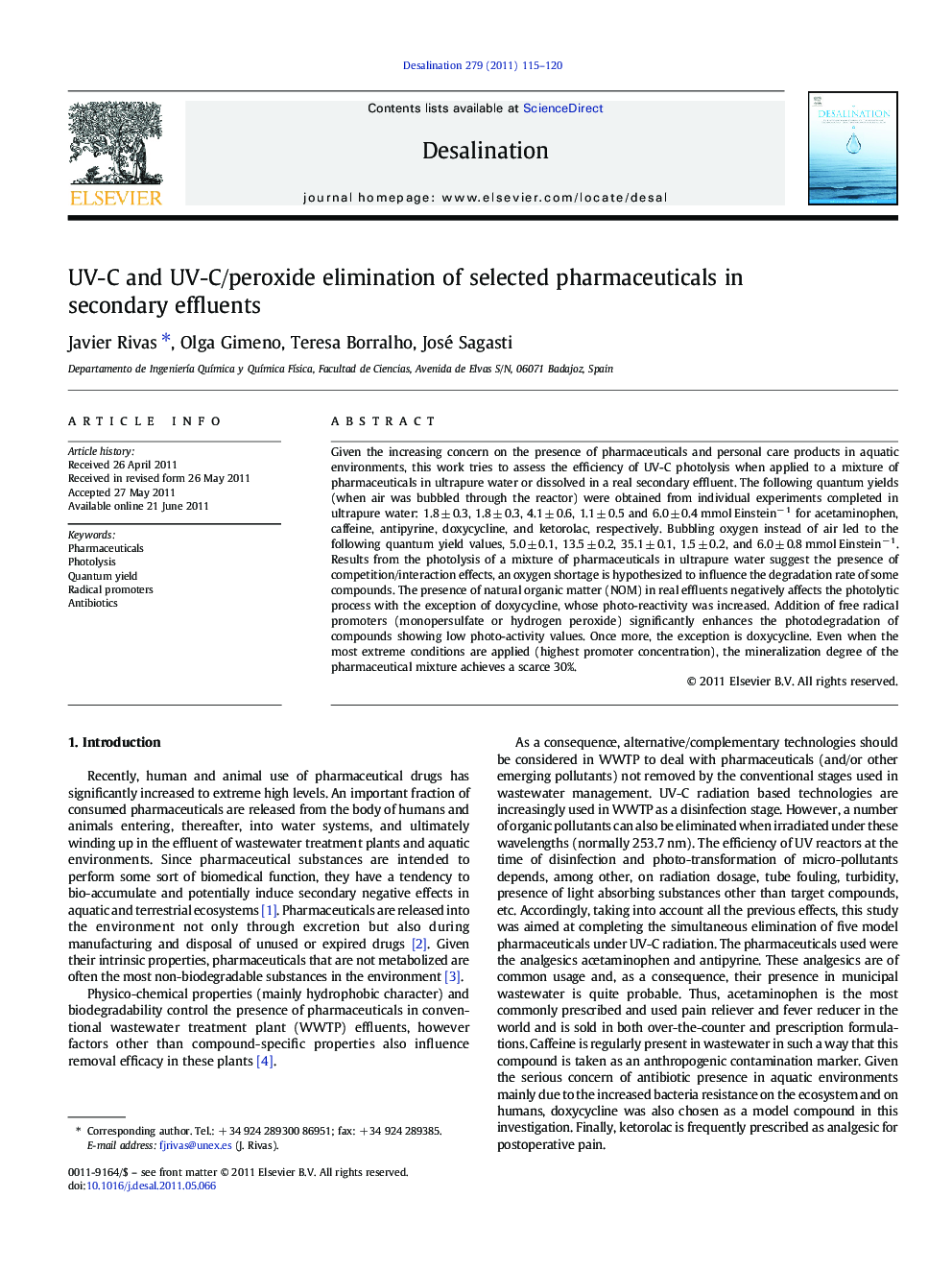| Article ID | Journal | Published Year | Pages | File Type |
|---|---|---|---|---|
| 624890 | Desalination | 2011 | 6 Pages |
Given the increasing concern on the presence of pharmaceuticals and personal care products in aquatic environments, this work tries to assess the efficiency of UV-C photolysis when applied to a mixture of pharmaceuticals in ultrapure water or dissolved in a real secondary effluent. The following quantum yields (when air was bubbled through the reactor) were obtained from individual experiments completed in ultrapure water: 1.8 ± 0.3, 1.8 ± 0.3, 4.1 ± 0.6, 1.1 ± 0.5 and 6.0 ± 0.4 mmol Einstein− 1 for acetaminophen, caffeine, antipyrine, doxycycline, and ketorolac, respectively. Bubbling oxygen instead of air led to the following quantum yield values, 5.0 ± 0.1, 13.5 ± 0.2, 35.1 ± 0.1, 1.5 ± 0.2, and 6.0 ± 0.8 mmol Einstein− 1. Results from the photolysis of a mixture of pharmaceuticals in ultrapure water suggest the presence of competition/interaction effects, an oxygen shortage is hypothesized to influence the degradation rate of some compounds. The presence of natural organic matter (NOM) in real effluents negatively affects the photolytic process with the exception of doxycycline, whose photo-reactivity was increased. Addition of free radical promoters (monopersulfate or hydrogen peroxide) significantly enhances the photodegradation of compounds showing low photo-activity values. Once more, the exception is doxycycline. Even when the most extreme conditions are applied (highest promoter concentration), the mineralization degree of the pharmaceutical mixture achieves a scarce 30%.
► New photochemical kinetic parameters not reported previously (quantum yield and molar extinction coefficient) are given. ► Different approaches are used to determine the kinetics. ► Disadvantages of using competitive kinetic methods are suggested. ► It is suggested that competitive experiments should consider the use of more than one reference compound. ► The effect of water matrix nature is tested. A kinetic model for the system UV/H2O2 is validated.
